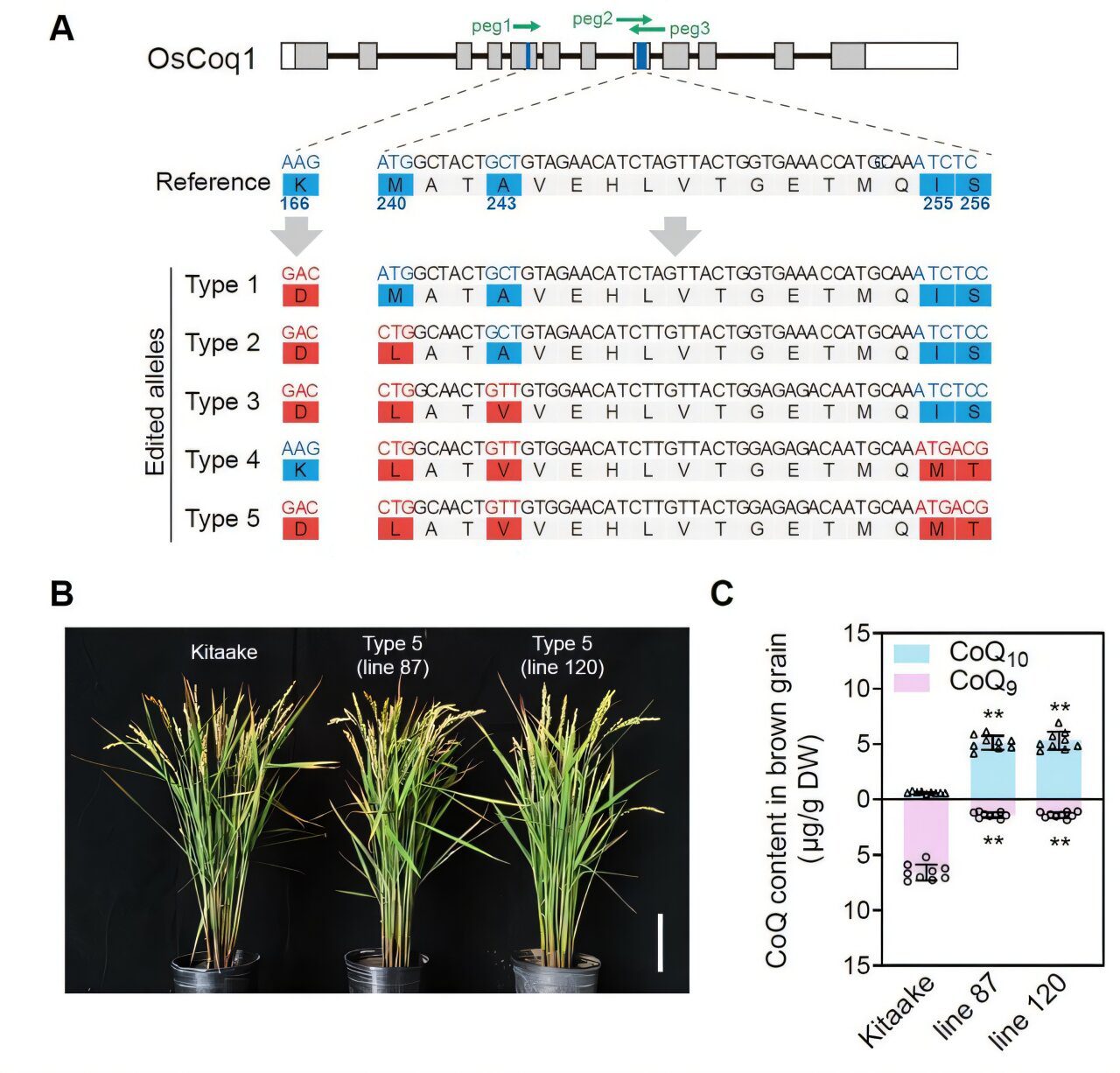

A group of scientists in China has successfully employed gene editing techniques to create rice varieties that generate coenzyme Q10 (CoQ10), an essential compound that supports human health.
This groundbreaking research, led by Prof. Chen Xiaoya from the CAS Center for Excellence in Molecular Plant Sciences and the Shanghai Chenshan Research Center, along with Prof. Gao Caixia from the Institute of Genetics and Developmental Biology at the Chinese Academy of Sciences (CAS), involved modifying five specific amino acids of the Coq1 enzyme in rice plants. This manipulation resulted in new rice varieties capable of synthesizing CoQ10.
The findings of this study are detailed in the journal Cell.
CoQ10 plays a crucial role in maintaining human health, particularly in cardiovascular protection. It is a key component of the mitochondrial electron transport chain and acts as a fat-soluble antioxidant. Different organisms produce CoQ with varying side-chain lengths.
While humans produce CoQ10 with a side chain consisting of 10 isoprene units (C50), staple food crops such as rice and wheat, along with many fruits and vegetables, primarily yield CoQ9, which has nine isoprene units (C45).
The creation of crops that produce CoQ10 significantly enhances the CoQ10 content found in plant-based foods, presenting a cost-effective and sustainable method for improving nutrition, which has considerable potential benefits.
The underlying molecular mechanisms governing the variability in CoQ side-chain lengths were previously ambiguous. However, leveraging the rich plant collections at the Shanghai Chenshan Botanical Garden from the CAS Center, the researchers analyzed 134 plant samples spanning 67 families, including mosses, clubmosses, ferns, gymnosperms, and angiosperms.
Through analyzing the distribution of CoQ types across these species, it was discovered that CoQ10 is an ancestral characteristic of flowering plants, with the majority still capable of synthesizing CoQ10. In contrast, grasses, daisies, and cucumber family plants predominantly produce CoQ9.
The researchers examined the evolution and natural variations of the Coq1 enzyme across over 1,000 terrestrial plant species, utilizing machine learning techniques to pinpoint five specific amino acid locations that influence the side-chain length.
Post-editing, the rice plants developed in this study demonstrated the capacity to produce CoQ10, yielding as much as 5 μg/g per grain. This illustrates that gene editing is an effective and safe approach for agricultural enhancement.
The innovative creation of CoQ10 rice varieties will greatly diversify the sources of CoQ10 in our diet. Furthermore, it serves as a prime example of integrating big data and artificial intelligence technologies in crop breeding methods.
Further Reading:
Jing-Jing Xu et al, Design of CoQ10 crops based on evolutionary history, Cell (2025). DOI: 10.1016/j.cell.2025.01.023
Journal Information:
Cell
Provided by
Chinese Academy of Sciences
Citation:
Gene-edited rice can produce a compound essential for human health (2025, February 14) retrieved 15 February 2025 from https://phys.org/news/2025-02-gene-rice-compound-vital-human.html
This document is subject to copyright. Apart from any fair dealing for the purpose of private study or research, no part may be reproduced without the written permission. The content is provided solely for informational purposes.









